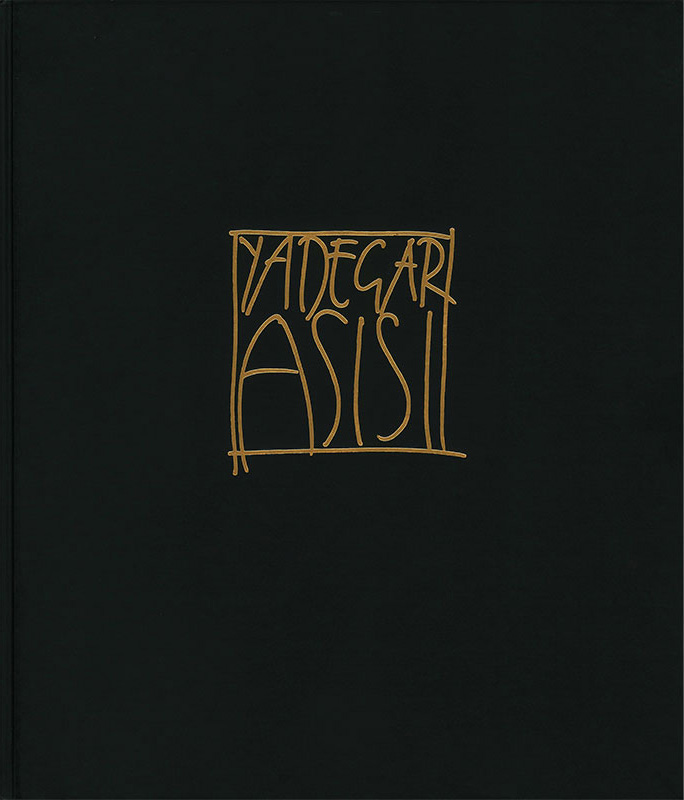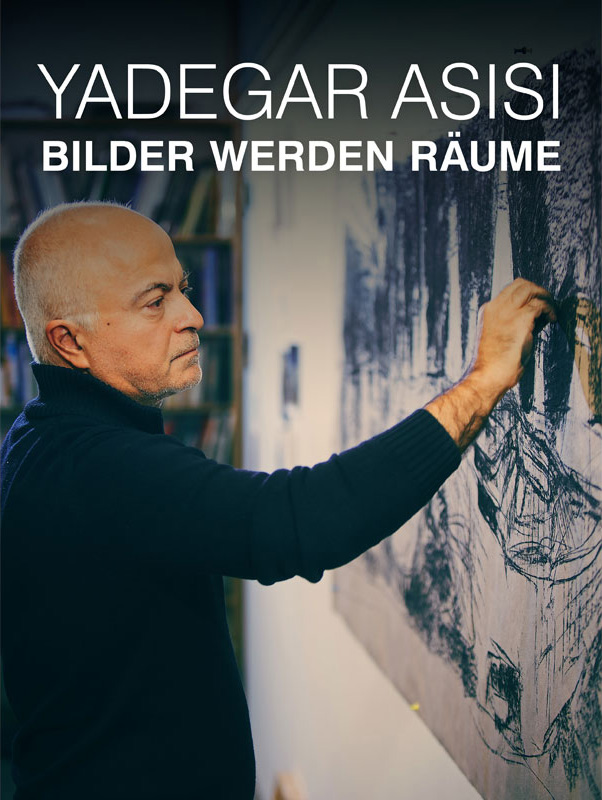Yadegar Asisi
Even as a small child, Yadegar Asisi was fascinated by the techniques of spatial illusion. His main interest lies in the Italian Renaissance artists of around 1500. Even at 10 years old, the Leipzig schoolboy was inspired by masters such as Andrea Mantegna or Leonardo da Vinci to question how to depict three-dimensional space within a two-dimensional painting. For the young – and, indeed, the adult – Asisi, the technique of drawing is a tool for discovering both the world and oneself. In some of his later callings, the principles of perspective assumed an important role.
Background
1955
Born in Vienna, childhood and youth in Halle and Leipzig
1973 – 1978
Architectural studies, Technical University Dresden
1978 – 1984
Study of painting, University of Arts, Berlin
1991
Visiting professor of architectural studies, University of Arts, Berlin
1996 – 2008
Professor for architectural presentation at the Dept. of Architecture, University of Applied Sciences, Berlin
Panoramas
NEW YORK 9/11
Since 9 April 2022, Leipzig
THE CATHEDRAL OF MONET
2020, Rouen
CAROLA'S GARDEN
2019 – 2022, Leipzig
TITANIC
2019 – 2020, Rouen
2017 – 2019, Leipzig
LUTHER 1517
Since 2016, Lutherstadt Wittenberg
ROUEN 1431
2016 – 2017, 2018, Rouen
GREAT BARRIER REEF
2018 – 2023, Pforzheim
2018, Rouen
2015 – 2017, Leipzig
LEIPZIG 1813
2013 – 2015, Leipzig
DIE MAUER
Since 2012, Checkpoint Charlie, Berlin
PERGAMON
Since March 2023, Pforzheim
Since 2018, Museumsinsel, Berlin
2016, video installation, Metropolitan Museum New York
2011 – 2012, Berlin
BAROQUE DRESDEN und DRESDEN 1945
Since 2006 / 2015, in a rotation, Dresden
AMAZONIA
2017 – 2020, Hanover
2015–2016, 2019, Rouen
2009 – 2013, Leipzig
ROME 312
2014 – 2018, Pforzheim
2014 – 2015, 2018/2019, Rouen
2005 – 2009, Leipzig
EVEREST
2003 – 2005, Leipzig
First half of the year 2012, Leipzig
First half of the year 2013, Leipzig
“Berlin 2005 – Cityvision“
1995, four panorama rotundas, Berlin
Reconstruction of the panorama “Ancient Rome. With the triumphal procession of Emperor Constantine in 312 AD“ by Alexander von Wagner and Josef Bühlmann
1993, Bundeskunsthalle Bonn
Other projects
Installation for the expansion of the Olympic Stadium
2002, Berlin
Film for Daniel Libeskind’s architectural competition for the rebuilding of the World Trade Center
2002
"The invisible City", open panorama segments of unrealised projects of urban planning
1999/2004, Berlin
"South Sea Dreams and Plant Hunters"
1999, Weimar
“Stadtbild – Stattbild“ (“Urban Image – instead of urban”)
1996, Innsbruck
Interior design of the residence theatre of Putbus Palace, Rügen, an anamorphotic painting
1996, Putbus
“Vestir o Christo Rei“, remodelling of the statue of Christ
1994, Lisbon
“Orbit 2000“, World Exposition EXPO 1992
1992, Seville
Railway terminus of the Berlin hover train at the Kemperplatz, Mies van der Rohe award together with studio “Brandt-Asisi-Böttcher“
1990, Berlin
Breitscheidplatz Berlin, anamorphotic installation
1989, Berlin
Mural painting at Kottbusser Tor station
1989, Berlin
“Mauerdurchblick“ (“View through the Wall“), illusionary painting on the Berlin Wall
1986, Berlin Kreuzberg
Motion pictures, e.g. for "Down by law" or "Himmel über Berlin" ("Wings of Desire")
1986
"Backyard with Carriage House", International Building Exhibition at the Martin-Gropius-Bau
1984, Berlin
Stage design
Stage design for Carl Millöcker‘s “The Beggar Student“, direction: Ralf Nürnberger
2013, Seefestspiele Mörbisch (Austria)
Stage design for W.A. Mozart‘s “Magic Flute“, direction: Ralf Nürnberger
2004, Leipzig Opera
Stage design for Friedrich von Flotow‘s “Martha“, direction: Ralf Nürnberger
2002, Staatsoperette Dresden
Stage design for Leonard Bernstein‘s “West Side Story“, direction: Ralf Nürnberger
2002, Staatsoperette Dresden
Stage design for Rudyard Kipling‘s "The Jungle Book", direction: Ralf Nürnberger
1992, Stadttheater Heilbronn
Stage design for Luigi Pirandello‘s "Six Characters In Search of an Author", direction: Ralf Nürnberger
1991, Stadttheater Heilbronn
Further exhibitions
"Anatomic Theatre", anamorphotic installation for the exhibition “Natura et Arte“
2001, Martin Gropius-Bau, Berlin
"Homage to Daniel Buren", panorama rotunda
1999, Weimar
“Europe Panoramas“
1996, Hanover
“Look homeward, Angel“
1993, Leipzig
“Berlin Myth“, installation of Anhalter Bahnhof
1987, Berlin
“Existence Minimism”
1986, installation for the XVIIth Triennial of Milan
"Homage à Gustave Eiffel", drawings und installations
1984, Galerie Marx, Berlin
Study and first steps
From 1973 to 1978, Asisi studied architecture at TU Dresden, the place where he discovered the appeal and peculiarities of this city, which was being rebuilt following its destruction in 1945. As the son of a Persian refugee, he was able to leave the GDR in 1978 to go to Iran, where he spent almost a year during the revolution. He returned to Germany in 1979 and, from then until 1984, he attended the High School of the Arts (now the University of the Arts) in Berlin, where he studied painting and was, latterly, a master pupil of Klaus Fußmann.
His mastery of perspective and passion for drawing meant Asisi could, via the Brandt-Asisi-Böttcher architectural practice established in 1982, implement ideas for projects that were accessible to a wide, lay audience. Asisi was one of the first to bring drawing into architectural presentations.
Anamorphoses
Given his interest in the creation of illusionist spaces, Asisi turned his attention to spatial installations, in which he exploited the technique of anamorphosis. Especially popular in Baroque art, this artistic technique of deliberately distorting ceilings creates a perfect spatial illusion when viewed from a particular point. The room’s existing boundaries are broken and illusively extended. As part of the ‘Mythos Berlin’ exhibition in Berlin in 1987, Asisi created an anamorphous reconstruction of the city's Anhalter rail terminus, which was destroyed in the Second World War. Another spatial illusion, from 1986, was the pictorial reconstruction of East Berlin's St. Michael's Church on the west side of the Berlin Wall in Kreuzberg. After the fall of the Wall in 1989, a piece of it was sent to Pope John Paul II as a gift, and it can now be found in the Vatican Gardens, in Rome.
Discovery of the panoramas
But it was while working on the 1993 exhibition ‘Desire: The Panorama as Mass Entertainment in the 19th Century’, curated by Marie-Louise von Plessen for the Bundeskunsthalle Bonn, that Yadegar Asisi found his true calling. Asisi did the exhibition architecture, for which he created a pictorial reconstruction of a historic panorama by Alexander von Wagner and Joseph Bühlmann, using a black-and-white concertina photograph as a guide. He realised that by concentrating on this medium, he could combine all his skills in drawing, painting, architecture and as a creator of spatial illusions. By 1995, he had already created four panoramas in Berlin, with the city’s future as a theme. While the masterplans for the redesign of central spaces such as Potsdamer Platz, Pariser Platz, Schlossplatz or Alexanderplatz were being drawn up, he created a corresponding panorama in each case, displaying them in newly-built rotundas, so that both the inhabitants of and visitors to Berlin – in short, everyone – would be able to have informed discussions about the city’s design. The enormous success of the initiative spurred him on and, as a result of further installations and developments, such as his Hansa panorama and the one he did for Daniel Libeskind as part of the competition to rebuild the World Trade Center, he got the opportunity to create his first large-scale panorama, measuring around 3,500 square metres, in his hometown of Leipzig. Asisi realised that there were possibilities, from the content point of view, to develop the panorama concept beyond the limitations of the 19th century.
Panoramas in Saxony and Berlin
With this in mind, he created EVEREST, which opened in a former gasometer in 2003. As a result of the unimagined success of this project, a permanent institution was created, with the portmanteau title of Panometer, to describe the synergy of a cylindrical panorama within a circular gasometer. In 2005, he created the ROME 312 panorama, for which he enlarged the format of the pictorial reconstruction he did for the Bonn exhibition and added content. In 2006, he was able to represent the distinctive history of Dresden and its architecture in that city's panometer: the subject of BAROQUE DRESDEN is the mythical ‘Florence on the Elbe’, influenced by Canaletto’s vedute. He followed this up in 2015 with DRESDEN 1945, which depicts the trauma of the destroyed city following its bombardment by the Allies in 1945. Leipzig played host to the nature panorama AMAZONIA in 2009, the LEIPZIG 1813 cityscape in 2013 and another nature panorama, GREAT BARRIER REEF, in 2015. These were followed in 2017 by TITANIC – a discourse on the myth of the modern.
The huge narrative-led pictorial worlds of Yadegar Asisi come to the fore in various sub-genres: city views provide an insight into the stages and forms of man's development; exciting nature displays allow us unimagined views of the most diverse regions and man's relationship with their complex ecosystems; moments from history awaken the collective memory and the sub-conscious. What unites all the works is an inherent interpretation and interpolation of space and time. Compaction is what Asisi himself calls it – in terms of the content and artistic statement being made by the work. So, the likes of GREAT BARRIER REEF or AMAZONIA bring together huge natural spaces in a panorama and deal with the complexity of nature while delighting in the wonders it entails; BAROQUE DRESDEN depicts an entire era; and DRESDEN 1945 awakens the collective memory.
The continuing success of the panoramas in Saxony led, in 2011, to a unique collaboration with the Pergamon Museum in Berlin – the first in the world at the time. PERGAMON featured a panorama of the ancient city by Yadegar Asisi, together with an archaeological exhibition of items from the antiquities collection of the Pergamon Museum, on Berlin's Museum Island. More than a million people visited the exhibition over the course of a year. Since November 2018, the revised Pergamon panorama has been shown in a newly conceived exhibition of the Collection of Classical Antiquities of the Staatliche Museen zu Berlin, Yadegar Asisi and Studio asisi in the newly erected exhibition building Pergamonmuseum. Das Panorama. In 2012, at Checkpoint Charlie in Berlin, Asisi unveiled his most personal work to date: the panorama THE WALL depicts his own experiences as an eyewitness to the divided city. He presents scenes of everyday life in the shadow of the Wall, thus recreating a period of recent history.
Panoramas with partners
In 2014, Asisi presented panoramas to partners in various cities for the first time: In the following years, his works were or are on display in the Gasometer in Pforzheim, in Rouen in northern France, in Lutherstadt Wittenberg and in Hanover. For Rouen and Wittenberg, the opportunity arose to create city-related images that fit thematically into the series of historical city panoramas: ROUEN 1431 focuses on the late Gothic period and Joan of Arc, an icon of France, LUTHER 1517 on the era of the Reformation, taking Martin Luther as an example and the situation in Wittenberg around 1517.
Publication
The panorama retrospective and the documentary "Images Transformed Into Space" provide an excellent overview of the development of Yadegar Asisi's immersive panoramic art between 2003 and 2018.



